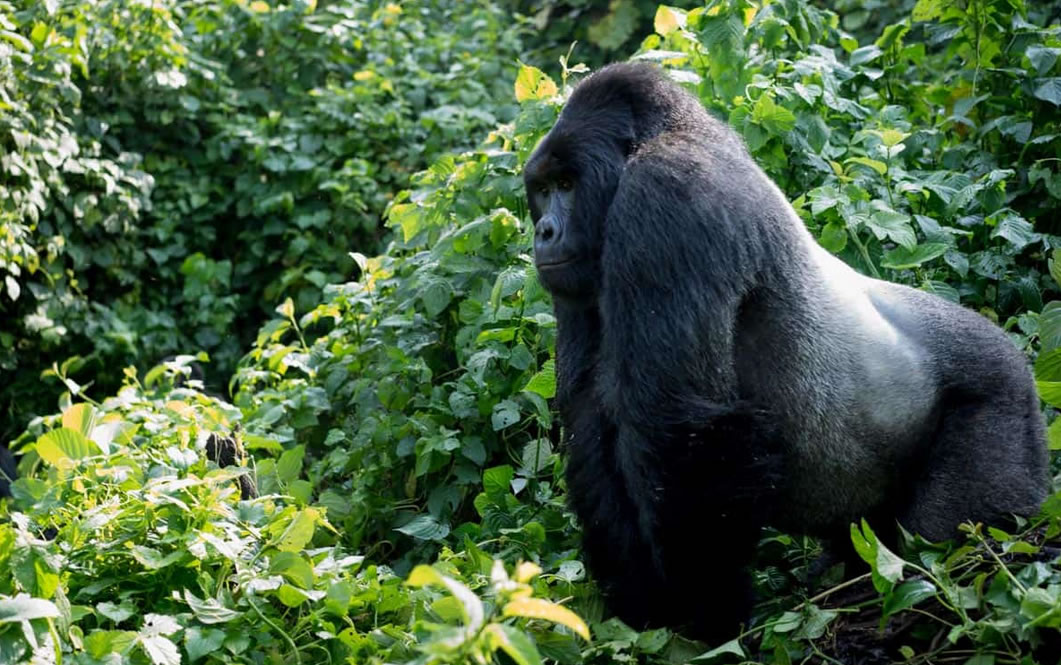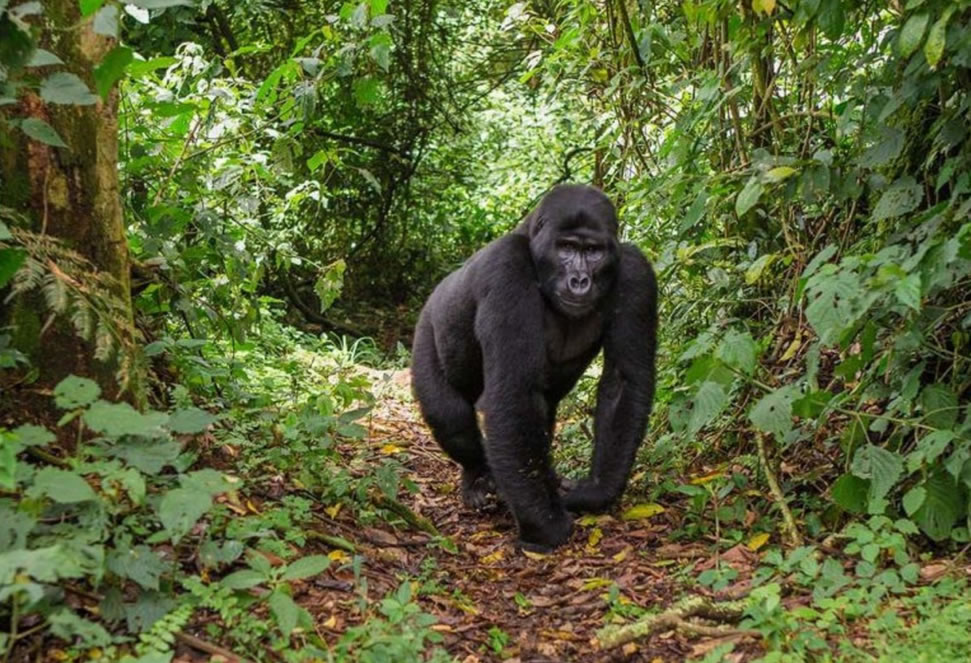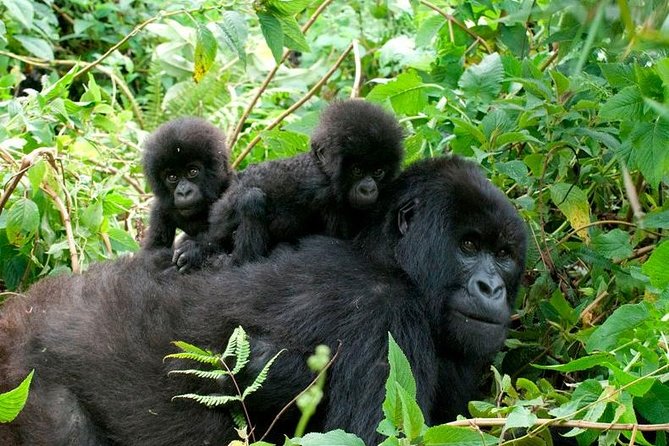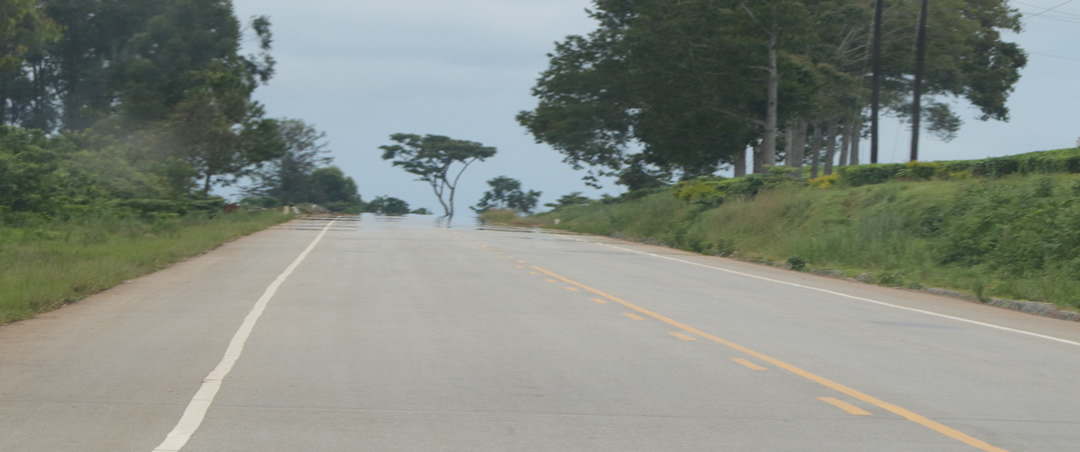
Facts About Mountain Gorillas and Gorilla Tourism in Africa
Mountain Gorillas are highly endangered species with less than 1000 of them living. Their main threat are poaching, civil wars, habitat loss, and diseases, they are also sold as pets and animals for private zoos though conservation efforts have led to the increase of mountain gorillas.
Mountain gorillas are herbivores animals. They feed on shoots, roots, stems, tree bark, fruits, pulp, plants, and wild celery. Baby mountain gorillas breastfeed and join the adult diet when they are about 3-4 years old, mountain gorillas don’t take water because they take enough moisture from their diet.
Mountain Gorillas are nomadic animals which is why they build new nests every day moving around their home range. The Mountain gorillas make their nests on top of trees using bent branches and grass.
Mountain gorilla families form groups that are dominant males known as Silverback because of the golden fur found on their backs, they can live in groups of up to 30 members consisting of females, young males, and baby gorillas.
Mountain gorillas are highly intelligent; this is seen in most gorillas that have been captivated they have learned to communicate with people using sign language, verbal expression, and so on.
They are the biggest species among Gorilla species, they have shorter hair and arms than other gorillas. Mountain gorillas also have an additional crest of fur on their foreheads, the thick fur on the bodies of mountain gorillas helps them when the weather in the mountain gets too cold.
They are gentle and calm animals; however, they should be treated with caution because they can become very aggressive. When disturbed, a female can fight to death for their young ones while the males can roar, hoot, bark, beat their chest thunderously, throw things, and charge.
The Silverbacks are always in control of the groups; they organize group activities for their groups and all the others in the group follow.
Newborn mountain gorillas are tiny weighing about 2 kilograms, the females can start producing at 10 years and their gestation period is 9 months like humans they cling to their mothers’ backs for 2-3 years then they can move on their own. Female mountain gorillas produce 5-6 offspring in a lifetime.
Baby Mountain gorillas and human babies almost have the same similarities in most characters apart from vegetation. They love to play together chasing each other and swinging on trees.
Mountain gorillas have their own physicians who make forest calls to the great apes and monitor each mountain gorilla family and treat them this has greatly led to the increase in mountain gorilla numbers.
Mountain gorillas communicated with each other using grunts, chest beatings, hoots, gestures, and other signs. They have a higher larynx than humans and also have a soft palate which isn’t large enough for sounds to resonate.
Mountain gorillas use tools for example they use stems for getting insects or ants from trees or the ground while others put logs on streams for other gorillas to cross.
Female Mountain gorillas have long-term relationships with male gorillas other than fellow female gorillas. Some primatologists consider the mountain gorillas in Bwindi National Park in Uganda to be another sub-species but there’s no conclusion to ascertain this yet.
Gorillas have a nose print such as a thumbprint in humans; this can be used for the identification of members of the family.
Mountain gorillas are considered to be an endangered species.
Mountain gorillas cannot survive in zoos; you can only visit gorillas in the wild. Their love for the wild makes them wither and die when captivated.
Benefits of African Gorilla Tourism
Gorilla Tourism involves gorilla trekking and gorilla habituation experience. and so on. Gorilla Tourism is among the major activities in the tourism sector. It’s of high benefit to trek Gorillas, and experience Gorilla habituation among others. Gorilla tourism benefits both Gorillas and human beings as discussed below:
Gorilla Tourism facilitates the conservation of Gorillas and their habitats – part of the revenue from gorilla trekking is put into conservation campaigns by employing ranger guides, Gorilla doctors, and security personnel among others. The list of the conservationist work hard to ensure that Gorillas and their habitat are safe.
Gorilla Tourism controls poaching – part of the revenue from gorilla trekking is given back to the community in terms of social services like clean water, security, better health facilities, and better education among others.
There is a chance for gorillas to get used to human beings – during Gorilla habituation, the gorillas are trained to get familiar with human beings. The familiarity between Gorillas and humans promotes gorilla activities that fetch some revenue.
Gorilla tourism creates a safe paradise for gorillas – The safety of gorillas in their natural habitats depends on the security offered by the ranger guides, tourism police, and the army, the treatment offered by Gorilla Doctors, and controlled poaching among others. The safety of Gorillas is based on the revenue put aside to conserve gorillas and their habitat.
Gorilla tourism is also beneficial to human beings in the following ways:
Employment opportunities – Gorilla tourism creates jobs for tour operators, ranger guides, Gorilla doctors, Tourism police, the army, and so on.
Gorilla tourism creates a market for locally produced commodities such as agricultural products, art and craft products, and so on. In other words, when residents around the park earn a living, it will stop them from poaching in the park.
Gorilla tourism is a source of government revenues – a percentage of revenue from gorilla tourism is given to develop the country in terms of taxes. In other words, gorilla tourism develops the entire country.
Gorilla Tourism develops nearby communities in terms of better social services like clean water, security, better education, better health facilities, and better roads among others.
In conclusion, gorilla tourism earns the country a lot of benefits both to Gorillas and human beings.
Getting to the Gorilla Destinations
Because the gorillas are found high in the Mountains and deep in the Jungles, access to the gorilla parks requires a strong 4×4 car, especially during the wet season. You can rent a strong 4×4 from credible car rental companies in Uganda such as Autorental Uganda, 4×4 Uganda, camp Masters Uganda, 4×4 Self Drive Adrica, and Drive Camp Uganda among others.


